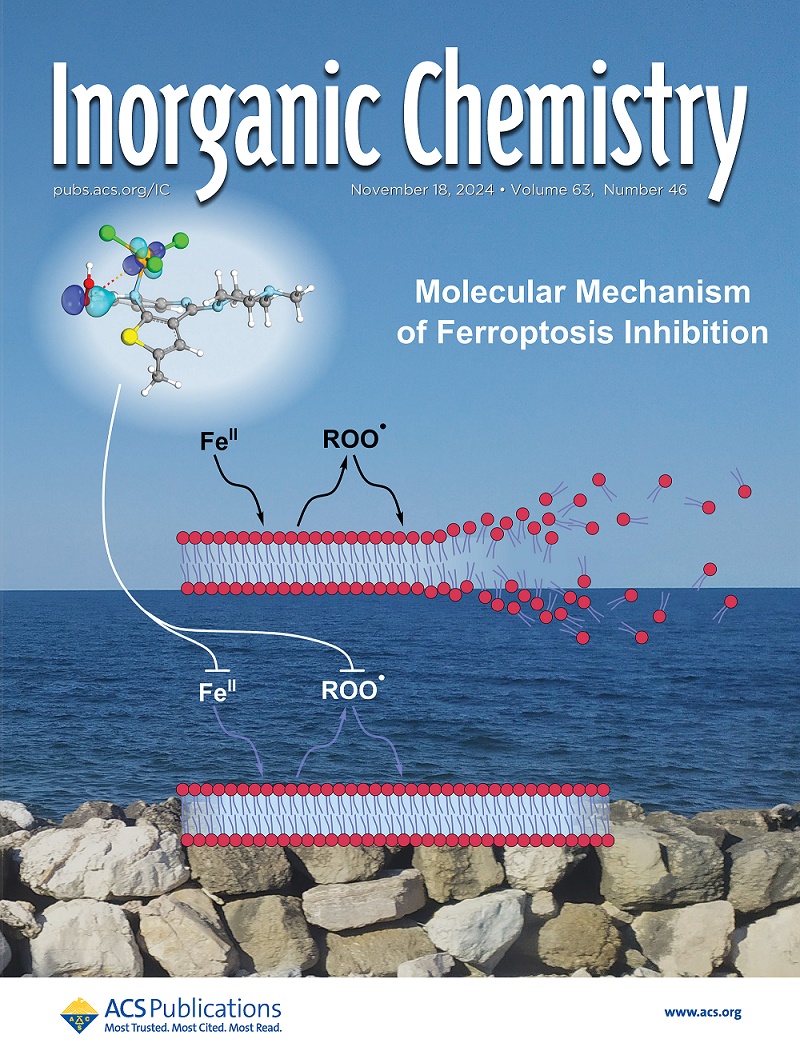揭示SO2的异常反应性和S-X长键的异常类型。
IF 4.7
2区 化学
Q1 CHEMISTRY, INORGANIC & NUCLEAR
引用次数: 0
摘要
本研究揭示了SO2形成异常稳定的M-X-SO2 (X = F, Cl, H)配合物的新反应性。此外,还发现了一种新型的S-X长键,它比传统的S-X共价键长得多。P, n连接的Ni-F配合物模型1A可以通过新的F-S长键结合SO2分子(2.207 Å),生成稳定的Ni-F-SO2配合物1B,以2.2 kcal/mol的吸能速率运行。根据自然定域分子轨道分析,新的S-F长键具有独特的p(F)→π*(O = S = O)键相互作用,这表明是由于S-F长所致。通过比较,发现新的F-S长键的强度(-2.2 kcal/mol)明显强于常见的非共价相互作用,如氢-卤素键。取代基的调制表明,给电子基团可以增加新的F-S键的强度和提高结合自由能ΔGbind。探索了M-X配合物的可能范围,发现各种金属和X (F, Cl和H)配体可形成稳定的M-X- so2配合物。具体来说,阴离子M-X配合物显示出更高的ΔGbind值,范围从-8到-10 kcal/mol。该研究为绿色、可回收、可调节的二氧化硫吸收方法铺平了道路。本文章由计算机程序翻译,如有差异,请以英文原文为准。
Unveiling Unusual Reactivity of SO2 and Unusual Type of S-X Long Bonds.
A new reactivity of SO2 to form unusual stable M-X-SO2 (X = F, Cl, H) complexes is unveiled in this study. Moreover, a new type of S-X long bonds, which are significantly longer than traditional S-X covalent bonds, has been discovered. The P,N-ligated Ni-F complex model 1A can bind a SO2 molecule through the new F-S long bond (2.207 Å), and a stable Ni-F-SO2 complex 1B is generated, being exergonic by 2.2 kcal/mol. According to natural localized molecular orbital analysis, the new S-F long bond has a unique p(F) → π*(O═S═O) bonding interaction, which is shown to arise from the long S-F length. In comparison, the strength of the new F-S long bond (-2.2 kcal/mol) is found to be significantly stronger than common noncovalent interactions such as the hydrogen and halogen bond. The substituent modulations suggest that the electron-donating groups can increase the strength of new F-S bonds and enhance binding free energies ΔGbind. The scope of possible M-X complexes was explored, and various metals and X (F, Cl, and H) ligands were found to form stable M-X-SO2 complexes. Specifically, the anionic M-X complexes display much higher ΔGbind values, ranging from -8 to -10 kcal/mol. The study paves the way for a green, recyclable, and adjustable SO2 absorption method.
求助全文
通过发布文献求助,成功后即可免费获取论文全文。
去求助
来源期刊

Inorganic Chemistry
化学-无机化学与核化学
CiteScore
7.60
自引率
13.00%
发文量
1960
审稿时长
1.9 months
期刊介绍:
Inorganic Chemistry publishes fundamental studies in all phases of inorganic chemistry. Coverage includes experimental and theoretical reports on quantitative studies of structure and thermodynamics, kinetics, mechanisms of inorganic reactions, bioinorganic chemistry, and relevant aspects of organometallic chemistry, solid-state phenomena, and chemical bonding theory. Emphasis is placed on the synthesis, structure, thermodynamics, reactivity, spectroscopy, and bonding properties of significant new and known compounds.
 求助内容:
求助内容: 应助结果提醒方式:
应助结果提醒方式:


